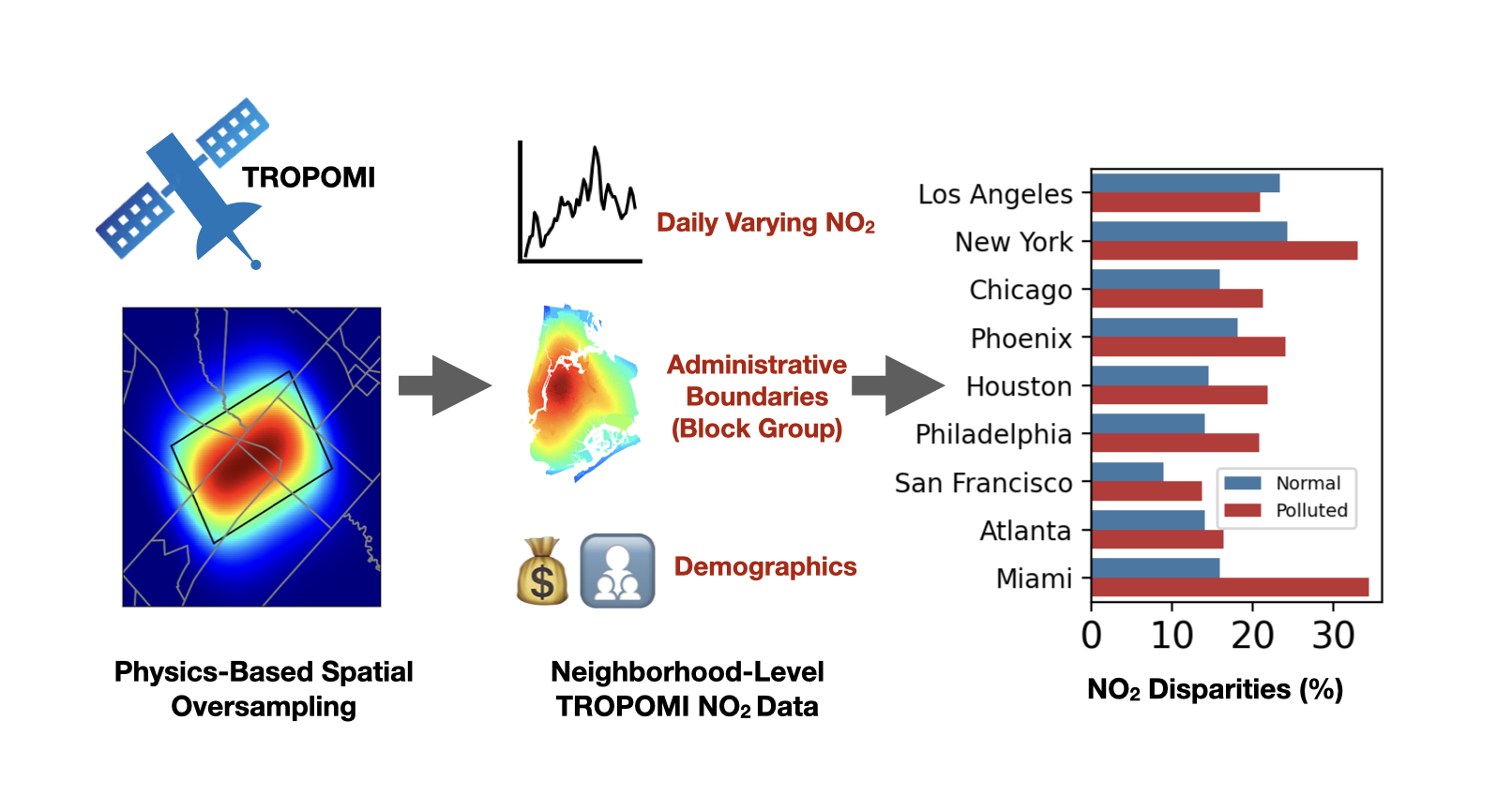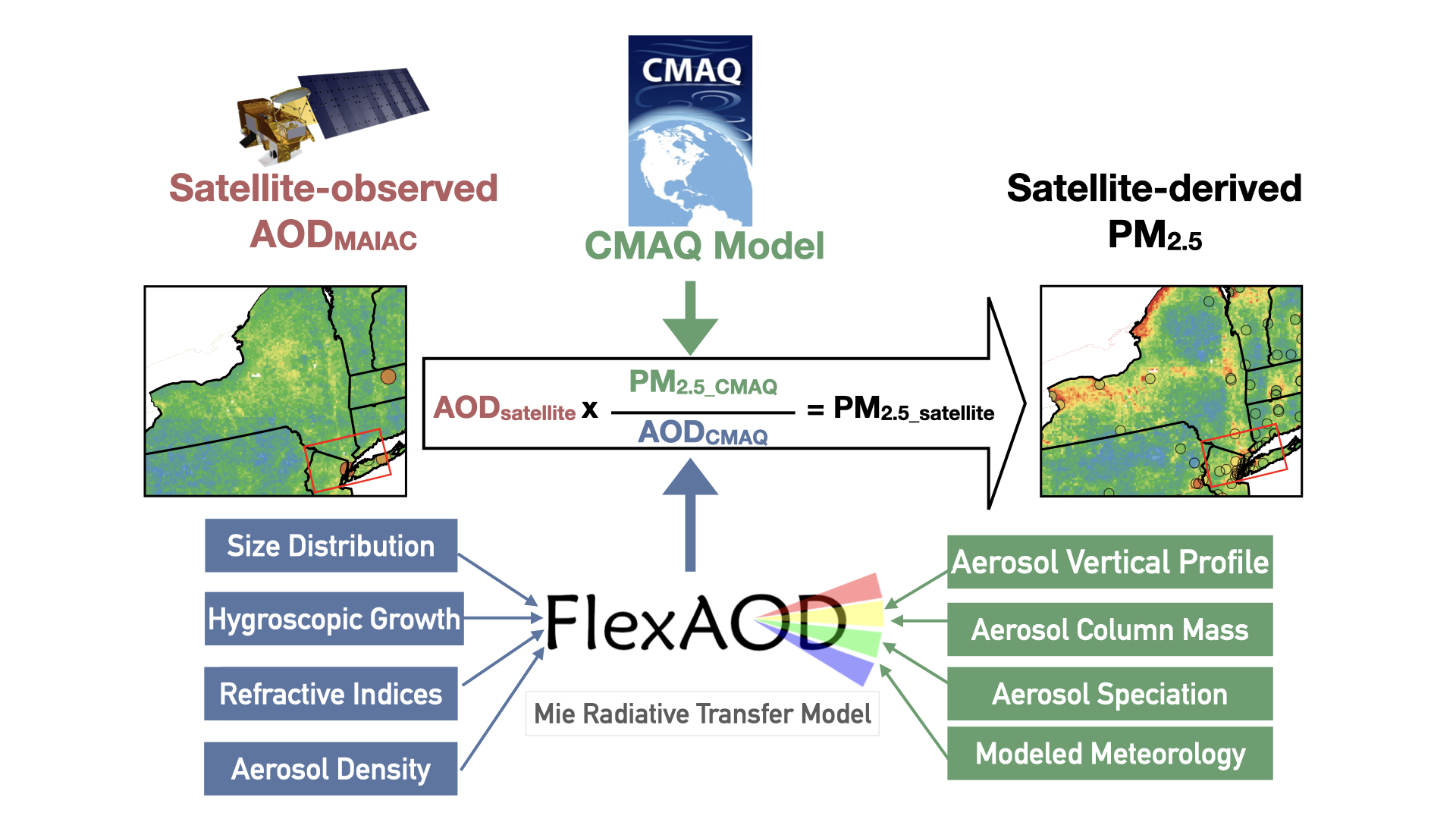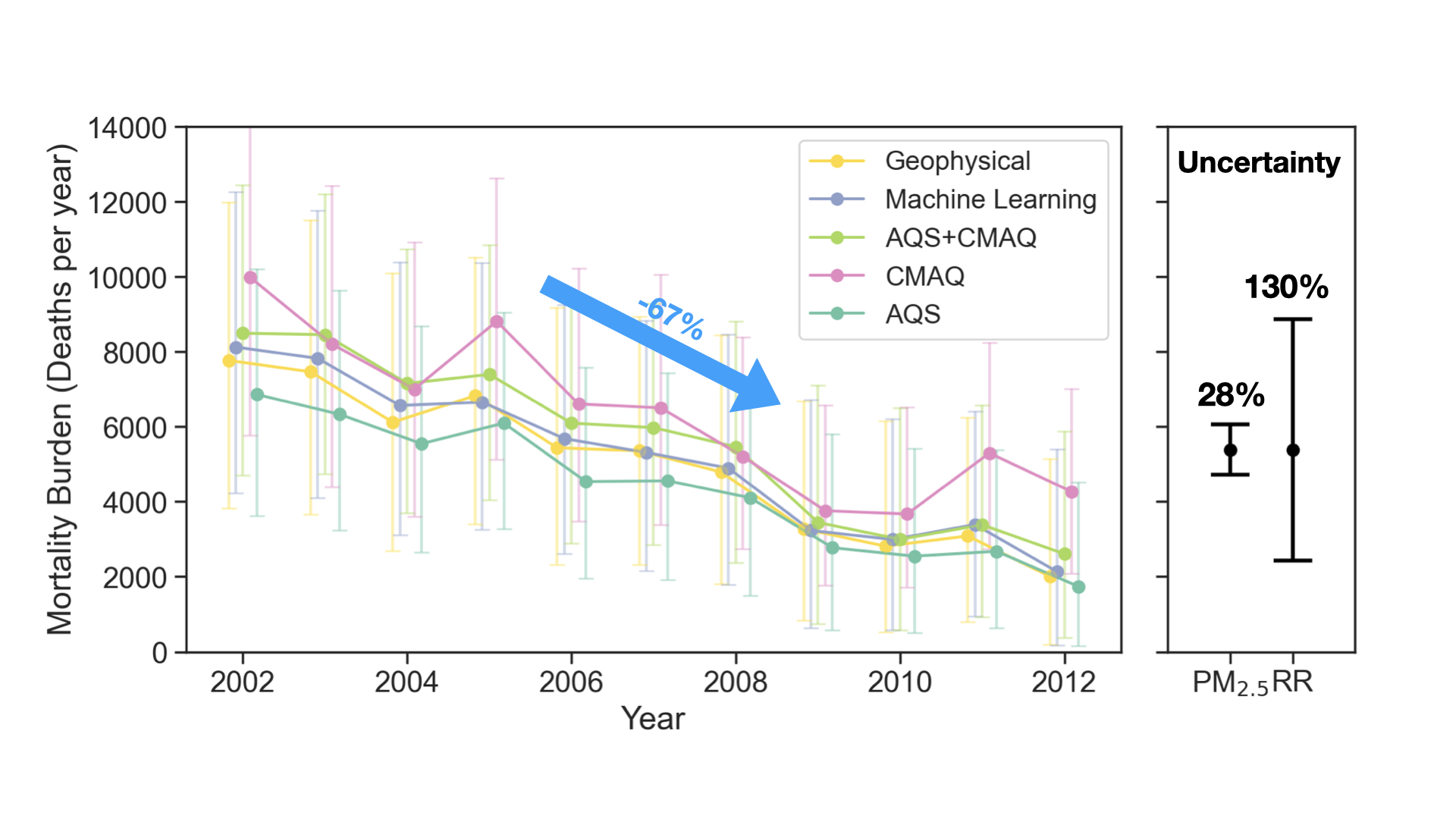Air Pollution and Health
Developing air pollution exposure estimates via integrating satellite remote sensing, models, and in-situ measurements
1. Physics-based spatial oversampling of TROPOMI NO2 observations to neighborhood levels
Satellite observations of NO2 have been widely used to inform health impacts and air pollution disparities. We develop an approach that directly connects satellite NO2 observations to U.S. neighborhoods. Using this dataset, we show significant NO2 pollution disparities across racial, ethnic, and income groups, which become even more pronounced on highly polluted days. We expect the newly developed NO2 dataset could lower the barriers for the public to access and interpret satellite data, facilitating interdisciplinary applications of satellite data.

Related Papers:
Jin, X., Merchant, Z. & Sun, K. (2025) Physics‐Based Spatial Oversampling of TROPOMI NO2 Observations to US Neighborhoods Reveals the Disparities of Air Pollution. GeoHealth 9, e2025GH001423.
2. Linking satellite AOD with surface PM2.5
Health impact analyses are increasingly tapping the broad spatial coverage of satellite aerosol optical depth (AOD) products to estimate human exposure to fine particulate matter (PM2.5). We use a forward geophysical approach to derive PM2.5 distributions from satellite AOD over the Northeast USA by applying PM2.5-AOD relationships simulated from a regional air quality model (CMAQ) coupled with a radiative transfer model. We developed an assessment framework that combines multi-platform ground, airborne and radiosonde measurements to disentangle multiple sources of uncertainties of the satellite-derived PM2.5. Our work suggests that the model representation of aerosol vertical profile, the parameterization of size distribution and hygroscopicity are the largest sources of uncertainties (Jin et al., 2019a).
Funding Support: NASA Health and Air Quality Applied Science Team, NYSERDA

Related Papers:
Jin, X., A. M. Fiore, G. Curci, A. Lyapustin, K. Civerolo, M. Ku, A. van Donkelaar, and R. V. Martin (2019), Assessing uncertainties of a geophysical approach to estimate surface fine particulate matter distributions from satellite-observed aerosol optical depth, Atmos. Chem. Phys. , 19(1), 295–313, doi: 10.5194/acp-19-295-2019
Diao, M., Holloway, T., Choi, S., O’Neill, S., Al-Hamdan, M., Donkelaar, A., Martin, R., Jin, X., Fiore, A., Henze, D., Lacey, F., Kinney, P., Freedman, F., Larkin, N., Zou, Y., Kelly, J., Vaidyanathan, A. (2019). Methods, availability, and applications of PM2.5 exposure estimates derived from ground measurements, satellite, and atmospheric models Journal of the Air & Waste Management Association . doi:10.1080/10962247.2019.1668498
3. Health impacts of PM2.5
Collaborating with public health experts, we compiled an ensemble of exposure models that include information from satellites, ground-based monitors and models. We estimate the PM2.5-related mortality burden over NYS decreased by 67% from 2002 to 2012 (Jin et al., 2019b). We quantified the uncertainties in the PM2.5 mortality burden (Jin et al., 2019b) and the exposure-response relationships (He et al., 2021) due to the choice of exposure models.
Funding Support: NASA Health and Air Quality Applied Science Team, NYSERDA

Related Papers:
Jin, X., A. M. Fiore, K. Civerolo, J. Bi., Y. Liu., A. van Donkelaar, R. V. Martin, M. Al-Hamdan, Y. Zhang, T. Insaf, M. Kioumourtzoglou, M. He, P. Kinney, (2019), Comparison of seven PM2.5 exposure products for estimating health benefits of emission controls over New York State, USA, Environmental Research Letters , doi: https://doi.org/10.1088/1748-9326/ab2dcb
He, M.Z., Do, V., Liu, S., Kinney, P., Fiore, A.M., Jin, X. , DeFelice, N., Bi, J., Liu, Y., Insaf, T.Z., Kioumourtzoglou M., (2021). Short-term PM2.5 and cardiovascular admissions in NY State: assessing sensitivity to exposure model choice. Environ Health. 20, 93, doi: 10.1186/s12940-021-00782-3.